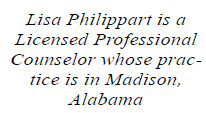October is Domestic Violence Awareness Month, and with domestic violence on the rise, it is time to uncover the realities of this difficult issue. According to the National Coalition Against Domestic Violence (www.NCADV.org) more than 3 million incidents of DV are reported each year, for both men and women. Nearly 20 people per minute are physically abused by an intimate partner in the United States. While the amount of physical abuse is staggering, what is often overlooked is the mental and emotional abuse that includes verbal cruelty, withholding, controlling, and manipulating. Let’s examine the four truths or realities of DV: the abuse, the abuser, the cycle, and the dependency.
The reality of abuse:
1. Most forms of abuse take place behind closed doors.
2. Verbal abuse precedes violence.
3. Abuse WILL damage your self-esteem.
4. One-third of victims have been drinking or using drugs.
5. A gun in the house increases the risk of homicide by 500%.
1. Abusers deny their actions and blame the victim.
2. Abusers need to be right and in control.
3. Abusers tend to be possessive and may try to isolate their partners from family and friends.
4. Abusers are often needy with unrealistic expectations of their partners and the relationship.
5. Abusers personalities may include insecurity, distrust, jealousy, and aggression.
The reality of the cycle: According to www.domesticviolence.org the cycle of violence includes 4 stages:
1. Tension building occurs when the abuser starts to get angry, communication breaks down, and the victim feels the need to keep the abuser calm.
2. The attack occurs, which includes any type of abuse.
3. Making up involves the abuser apologizing, stating that it will ever happen again, or even denying that it ever took place.
4. The calm period usually means that physical abuse may not be taking place, and the victim may hope that the abuse is over.
According to NCADV, victims of violence endure an average of up to seven attacks. The abuser is counting on his ability to control the victim and use shame about the abuse to lower self-esteem. This lack of confidence causes the victim to withdraw, creating even more fear and reliance. The abuse becomes an emotional rejection with a threat of abandonment. Victims hope the abuser will change, since there are usually good times between episodes. And often the abuser can be charming and romantic. One victim explained that, “You love Dr. Jekyll and make excuses for Mr. Hyde.” The dependency carries over into other areas besides emotional. Victims may also be dependent financially, have nowhere else to live, and have childcare concerns.
Next time we will examine the steps you can take if you or someone you know is involved in a domestic violence situation.
Lisa Philippart is a Licensed Professional Counselor whose practice is in Madison, Alabama
By: Lisa Philippart
Licensed Professional Counselor










